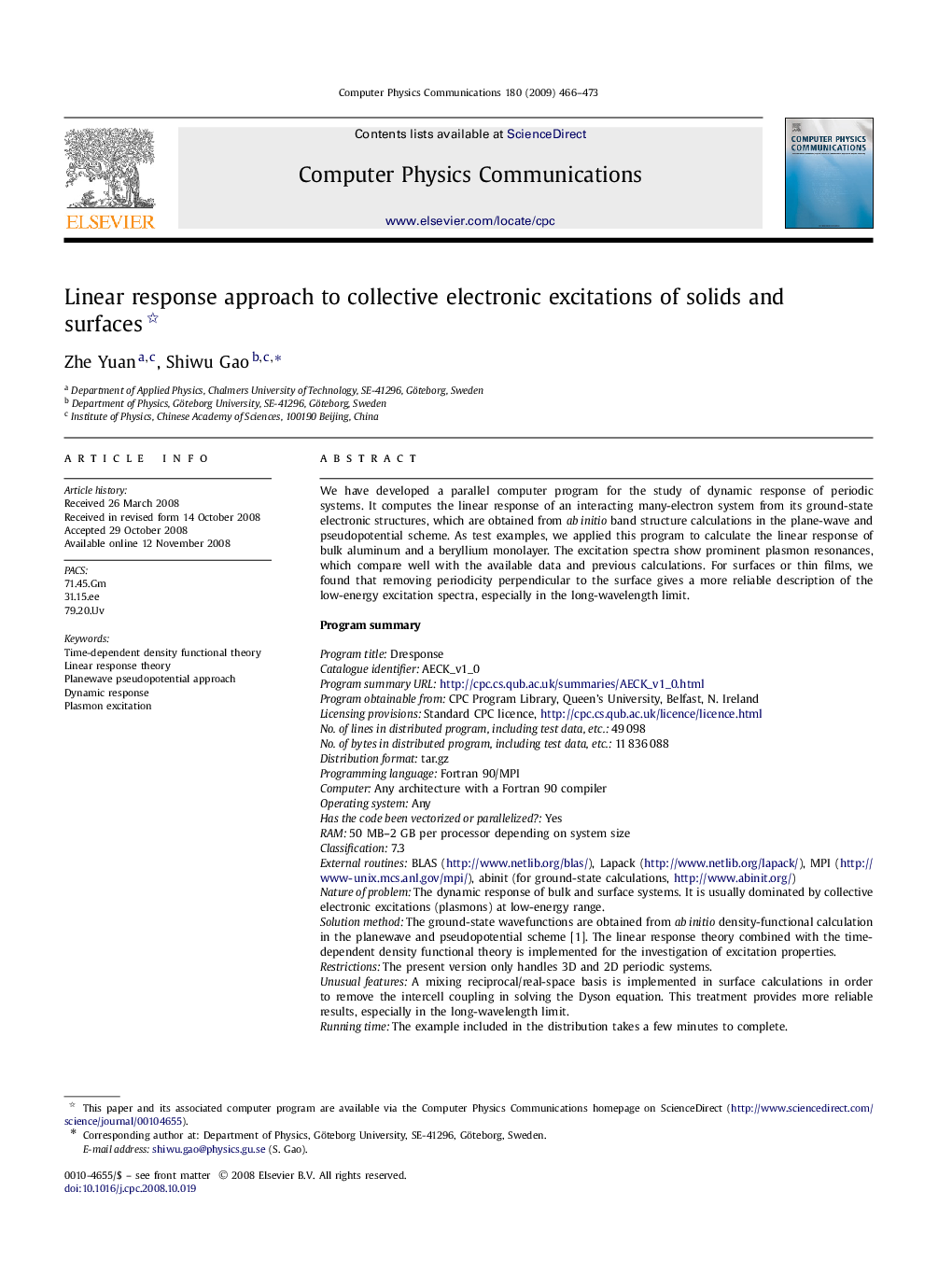| کد مقاله | کد نشریه | سال انتشار | مقاله انگلیسی | نسخه تمام متن |
|---|---|---|---|---|
| 503775 | 863811 | 2009 | 8 صفحه PDF | دانلود رایگان |

We have developed a parallel computer program for the study of dynamic response of periodic systems. It computes the linear response of an interacting many-electron system from its ground-state electronic structures, which are obtained from ab initio band structure calculations in the plane-wave and pseudopotential scheme. As test examples, we applied this program to calculate the linear response of bulk aluminum and a beryllium monolayer. The excitation spectra show prominent plasmon resonances, which compare well with the available data and previous calculations. For surfaces or thin films, we found that removing periodicity perpendicular to the surface gives a more reliable description of the low-energy excitation spectra, especially in the long-wavelength limit.Program summaryProgram title: DresponseCatalogue identifier: AECK_v1_0Program summary URL:http://cpc.cs.qub.ac.uk/summaries/AECK_v1_0.htmlProgram obtainable from: CPC Program Library, Queen's University, Belfast, N. IrelandLicensing provisions: Standard CPC licence, http://cpc.cs.qub.ac.uk/licence/licence.htmlNo. of lines in distributed program, including test data, etc.: 49 098No. of bytes in distributed program, including test data, etc.: 11 836 088Distribution format: tar.gzProgramming language: Fortran 90/MPIComputer: Any architecture with a Fortran 90 compilerOperating system: AnyHas the code been vectorized or parallelized?: YesRAM: 50 MB–2 GB per processor depending on system sizeClassification: 7.3External routines: BLAS (http://www.netlib.org/blas/), Lapack (http://www.netlib.org/lapack/), MPI (http://www-unix.mcs.anl.gov/mpi/), abinit (for ground-state calculations, http://www.abinit.org/)Nature of problem: The dynamic response of bulk and surface systems. It is usually dominated by collective electronic excitations (plasmons) at low-energy range.Solution method: The ground-state wavefunctions are obtained from ab initio density-functional calculation in the planewave and pseudopotential scheme [1]. The linear response theory combined with the time-dependent density functional theory is implemented for the investigation of excitation properties.Restrictions: The present version only handles 3D and 2D periodic systems.Unusual features: A mixing reciprocal/real-space basis is implemented in surface calculations in order to remove the intercell coupling in solving the Dyson equation. This treatment provides more reliable results, especially in the long-wavelength limit.Running time: The example included in the distribution takes a few minutes to complete.References:[1] G. Onida, L. Reining, A. Rubio, Rev. Mod. Phys. 74 (2002) 601.
Journal: Computer Physics Communications - Volume 180, Issue 3, March 2009, Pages 466–473